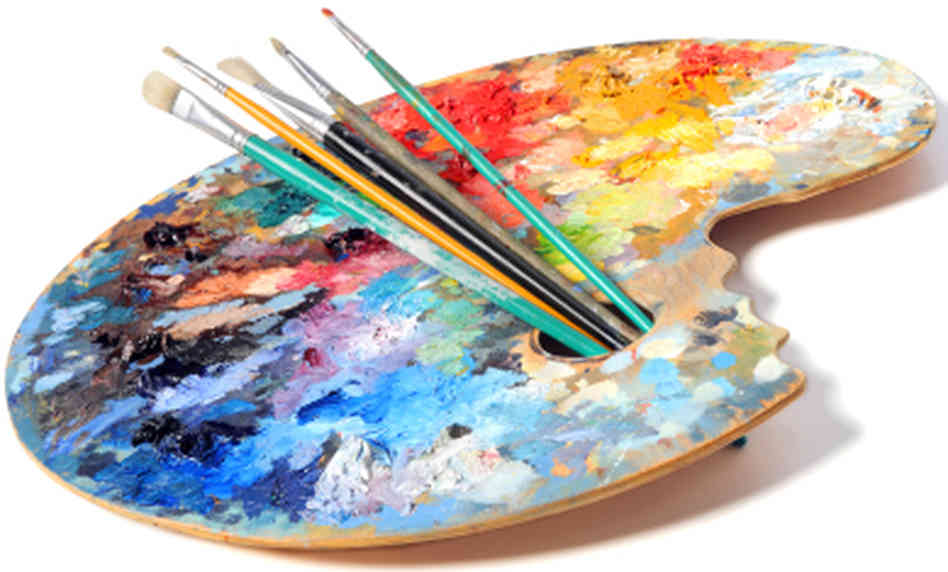Introducing one of the most Intriguing Trump Art Parts of the Years
Introducing one of the most Intriguing Trump Art Parts of the Years
Blog Article
Digging Into the Diverse World of Artistic Expression: From Surrealism to Abstract Realistic Look
In the realm of imaginative expression, from the dreamlike landscapes of surrealism to the elaborate play of light and form in abstract realism, musicians have continuously pushed the boundaries of imagination and imagination. Each motion holds an one-of-a-kind lens whereby the world is watched and translated, offering a look right into the depths of human feeling, understanding, and thought. As we check out the multifaceted world of art, we are offered with a tapestry of styles, methods, and philosophies that challenge our understanding and prompt consideration. The journey with these varied forms of creative expression assures to unravel an abundant tapestry of aesthetic storytelling and intellectual query that captivates the mind and mixes the heart.
Surrealism: Unleashing the Subconscious
Surrealism, an avant-garde artistic motion of the 20th century, dug right into the midsts of the subconscious, introducing a globe of dream-like images and non-traditional juxtapositions. Headed by musicians like Salvador Dali, René Magritte, and Joan Miró, Surrealism looked for to test the traditional means of recognizing and seeing art. With techniques such as automatism and desire evaluation, Surrealist musicians intended to use the unconscious mind to expose concealed truths and wishes.
One of the crucial elements of Surrealism was the emphasis on the irrational and the astonishing. By integrating unforeseen elements in their works, Surrealist musicians intended to produce a sense of disorientation and surprise in the viewer. This disruption of reasoning and factor was indicated to provoke a much deeper expedition of the subconscious and the secrets of the human psyche.
Abstract Realism: Redefining Assumption
Testing conventional artistic boundaries, Abstract Realistic look redefines understanding via the blend of identifiable elements with abstract forms. This cutting-edge technique to art integrates the representational accuracy of realistic look with the innovative freedom of abstraction, supplying customers a special visual experience that motivates them to examine their perception of fact.
In Abstract Realistic look, artists make every effort to record the significance of their topics while also instilling their deal with a feeling of depth and complexity with abstract elements. By mixing the knowledgeable about the strange, these artists welcome audiences to involve with their pieces on numerous levels, urging them to check out the subtleties of color, type, and texture.

Cubism: Fragmentizing Fact
Making use of fragmented perspectives and geometric types, Cubism reinvented the imaginative depiction of reality in the early 20th century. This technique not just deconstructed fact yet additionally emphasized the flatness of the canvas, leading the means for future abstract art activities.

Cubism can be categorized into two main phases: Analytical Cubism, characterized by monochromatic color schemes and detailed, fragmented forms; and Artificial Cubism, which incorporated collection components and brighter shades right into the make-ups. Via these unique stages, Cubism affected not only paint yet additionally sculpture, style, and layout. trump art. Its influence resounded across the art world, motivating musicians to check out new ways of representing the globe and analyzing around them
Expressionism: Emotions on Canvas
Discovering the depths of human emotions with expressive and vivid brushstrokes, Expressionism arised as a profound imaginative motion in the very early 20th century. Unlike previous art motions that concentrated on showing the outside globe, Expressionism looked into the interior realm of the artist's psyche, intending to evoke raw straight from the source feelings and provoke natural reactions from viewers.
Expressionist artists, such as Edvard Munch, Egon Schiele, and Emil Nolde, denied standard notions of appeal and realism in support of misshaping type and shade to convey subjective feelings. Using overstated brushwork, bold colors, and altered numbers aided produce a feeling of anxiousness, alienation, or interest in their works.
One of one of the most famous instances of Expressionism is Munch's "The Scream," which records the intense stress and anxiety and misery of modern-day life through its swirling, distorted number versus a blood-red sky. With their psychologically charged works, Expressionist musicians looked for to test conventional artistic standards and offer a home window into the unstable midsts of the human heart.
Contemporary Art: Developing Point Of Views

One of the specifying features of contemporary art is its continuous development and capacity to adapt to changing cultural landscapes. Artists are progressively including modern technology into their practice, blurring the lines between the physical and electronic worlds. This blend of tools enables innovative ways of storytelling and engaging with audiences in a more interactive manner.
Furthermore, contemporary art commonly works as a system for social commentary, attending to pressing problems such as identity, politics, and the atmosphere. Artists are using their work to prompt and spark essential conversations idea, clarifying the intricacies of the globe we reside in. As viewpoints remain to progress, contemporary art remains a dynamic and influential pressure in shaping our cultural landscape.
Conclusion
In conclusion, the globe of creative expression includes a vast array of movements and styles, each with its very own special approach to conveying definition and great post to read feeling. From surrealism's expedition of the subconscious to abstract realism's redefining of perception, and from cubism's fragmentation of fact to expressionism's portrayal of emotions, art remains to progress and challenge viewpoints - trump art. Contemporary art shows the ever-changing globe we reside in, offering brand-new methods to interpret and recognize the complexities of our fact
As we check out the multifaceted globe of art, we are presented with a tapestry of designs, strategies, and approaches that test our understanding and provoke reflection. Its effect resounded across the art globe, inspiring musicians to check out brand-new methods of standing for the world and analyzing around them.

Report this page